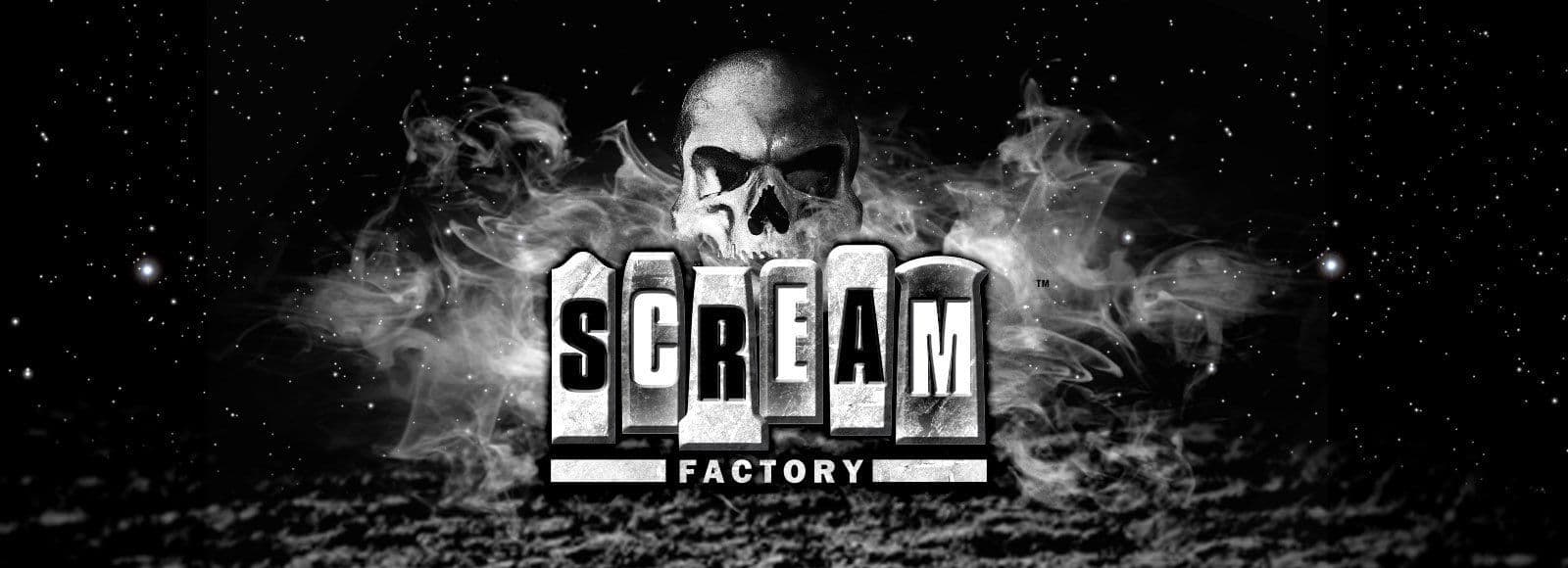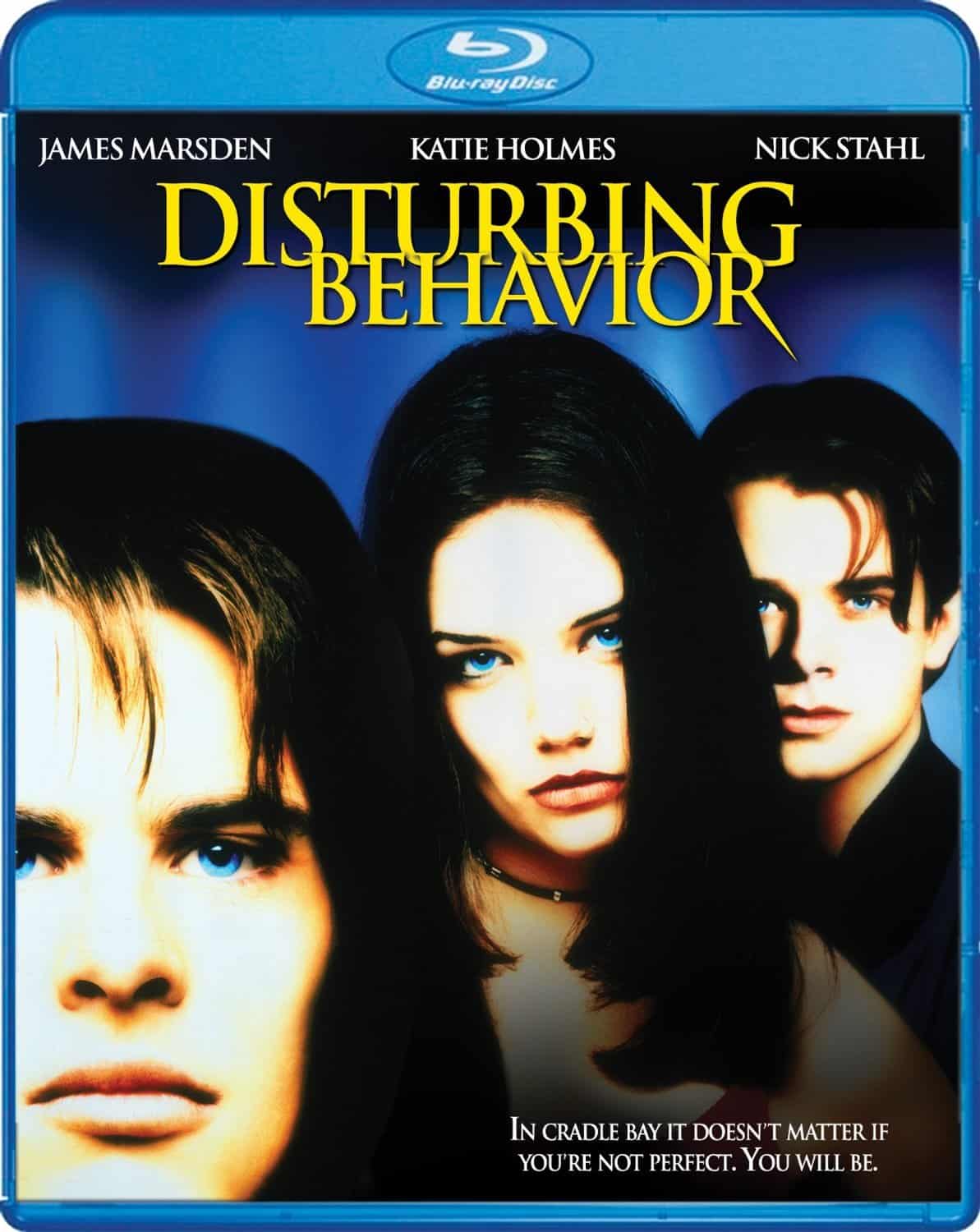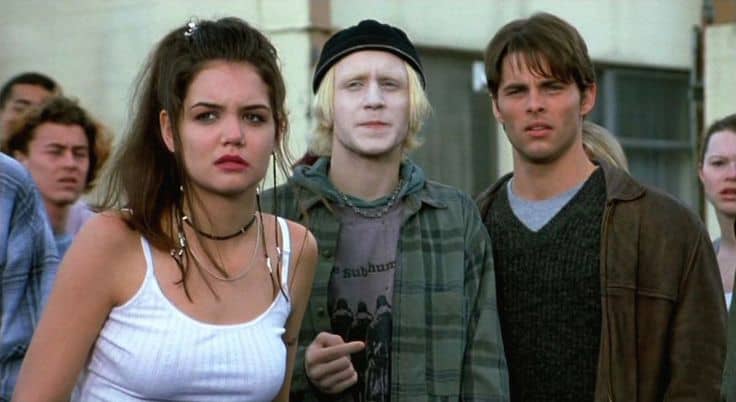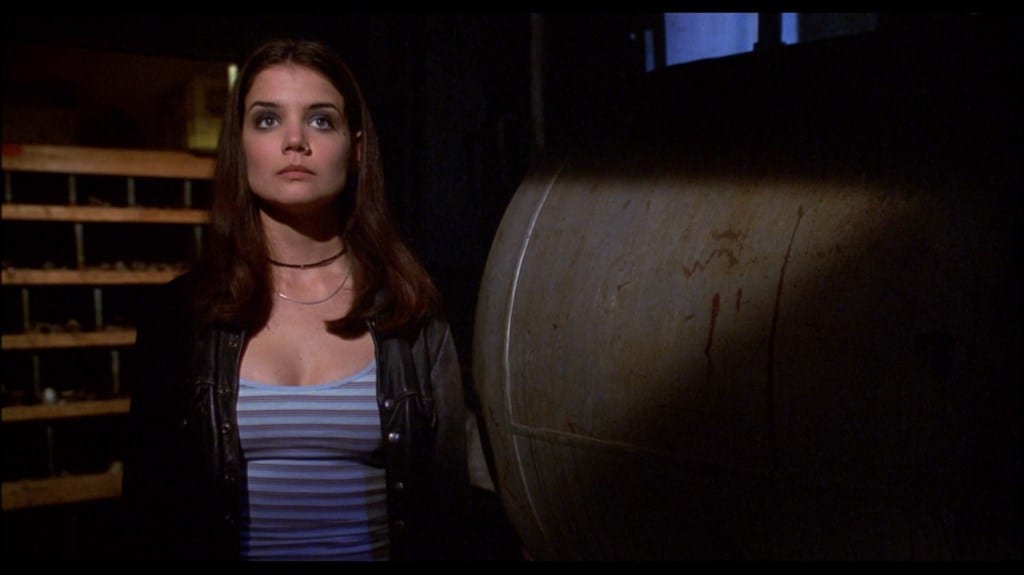Welcome to another Scream Factory blu-ray release review! This time we take a look at Disturbing Behavior, released on March 22nd, 2016.
Packaging
Disturbing Behavior arrives in a regular Amaray blu-ray case. The paper slipcover’s front side is adorned with the original theatrical poster, although the image of stars Marsden, Holmes and Stahl appears to have been cropped and squished just a little a bit. Originally Holmes’ shoulders were visible in the image and her head was a bit higher than Marsden’s, whereas now only her head can be seen. Admittedly, the original one-sheet was never the most inspiring piece of marketing, and since this isn’t a Collector’s edition release, this is as good as it gets. A production still photo featuring all three of the same actors graces the inside of the case.
Feature Presentation
Written by Scott Rosenberg
Directed by David Nutter
U.S.A., 1998
Welcome to Cradle Bay, a cozy little community in somewhere, U.S.A., where most of the people know each other and the kids at high school all fit into easily recognizable, very stereotypical factions. Not everyone is having a good time, least of all Steve Clark (James Marsden), who has just moved there at the behest of his family following the tragic death of his older brother. Fitting in isn’t easy, but some help to sooth the process arrives in the form of oddball, conspiracy theorist pothead, but well-spoken Gavin (Nick Stalh) and loner Rachel (Katie Holmes), with whom he shars a love-hate relationship. The three get along rather well, but Gavin is convinced that something is wrong some of the kids at school, and he isn’t talking about regular teenage attitudinal problems. No, there are students who are being ‘transformed’ into pseudo-perfect people and join the Blue Ribbons, the definitive clean-cut clique. This might be happening against their will, and it may stem of whatever Dr. Edgar Caldicott (Bruce Greenwood) is doing during his Monday night meetings with the parents of Cradle Bay. In this town, being perfect is not what it’s cracked up to be…
David Nutter’s Disturbing Behavior is a pure relic of the 1990s. Mind you, that statement comes with a peppering of lovable nostalgia, which isn’t surprising coming from anybody that grew up a teenager during that decade and experienced high school dramatics. The clothes, the soundtrack, James Marsden’s floppy hair, the cinematography and editing styles for this brand of horror, virtually everything about this 1998 endeavour screams the 90s. Again, that isn’t a bad thing per say. Lord knows that in recent years there have been legions of people that cannot get enough 1980s nostalgia, and even when served all they could get, they’d probably ask for more. In that light, a bit of nostalgia for the successive decade seems earned for once.
Comforting familiarity with the sights and sounds of bygone era aside, it should be noted that Disturbing Behavior is a mixed bag at best. There are some very admirable qualities to the efforts of the cast and crew, with special mention going to a select few of the former. It’s easy now to forget how good Nick Stahl could be when he wanted to. He is, for all intents and purposes, the highlight of the film’s first half, injecting multiple scenes with some very off-kilter yet infectious energy. The role of Gavin is difficult to pigeonhole, which in large part is what makes it captivating. Yes, Gavin is a bit rude at times and thinks highly of himself, yet at the same time he’s surprisingly verbose in the best way possible. He won’t limit himself to criticizing someone’s behaviour with a lowbrow insult. He’ll get his point across whilst referencing a lauded work of literature. Stahl is genuinely compelling in the role, as Gavin wrestles with what he believes is a conspiracy to brainwash Cradle Bay’s teens while trying to keep his head.
It comes as little surprise, then, that the movie’s biggest misstep is having his character become a victim to the Blue Ribbon operation, reducing his personality and screen time exponentially for the remaining 45-odd minutes. Not that co-stars Katie Holmes and James Marsden are incapable of carrying the story the rest of the way, but they simply do not possess the same level of charisma Stahl brings to the picture. Holmes and Marsden are fine in their respective roles, but once Stahl takes a back seat, his absence is sorely felt. Thankfully, Bruce Greenwood, one of the most underrated yet respectable actors working in Hollywood, sees his role grow in importance as the story reaches its climax. William Sadler is also given a supporting part as a school janitor of sorts (although he works in the sewage system as well. It’s not exactly clear what his role is) with a heavy European accent. Sadler is generally a fun actor to have around in a film, although his efforts here are not as exciting as the description of his character sounds.
Most critically, the film is not very scary, nor very surprising. The blu-ray’s back cover quotes a critic’s review from 1998 comparing the film to an episode of the X-Files. It’s an apt comparison, and that’s without taking into consideration that X-Files composer Mark Snow handles orchestral duties, or that David Nutter himself took over directing duties for a few episodes of the show. A fiendish, evil cover-up that is affecting innocent people in an entire town, some attempts at thrills with slow walks down the spooky hallways of spooky buildings, the protagonists trying to unravel the mystery as their very lives are threatened, there is a fair bit of Chris Carter blueprint in Disturbing Behavior. Had all those elements come together and provide actual surprises and legitimate thrills, then the film might be more fondly remembered. As it stands, the movie is rather predictable, and its surprisingly infrequent attempts at delivering chills are pedestrian. It isn’t a bad film per say, just not one that breaks the mould.
If all of that sounds rather disappointing, it also does not represent the full story. A bit of cursory research reveals that Nutter, who was helming his feature-length debut, did not have final say for the theatrical cut. Shortly after shooting completed, the studio made several cuts and re-edits, hence the tame, neutered final product. That 90s nostalgia effect sounds like a rather strong argument in the film’s favour by now.
Video and audio quality
The film, presented in 1.85:1 widescreen, begins in worrisome fashion during the opening credits. While the idea of having a flashing light review the cast and crew names that alter every time the powerful beam in the background goes on and off is fine and good, there are some discernible digital artifacts that plague the image. The original intent seems to be to make the sequence come across as smoky and mysterious, but as is regularly the case when digital transfers mishandle smoke, steam or mist, some ugly digital block effects can be seen.
Thankfully, that’s the only part of the transfer that merits any complaints. The image is generally faithful to what the film is supposed to look like. Cinematographer John S. Bartley favours a lot of natural lighting throughout the film whenever the opportunity presents itself, and by and large the 1080p transfer handles the detail, colour scheme and shadows efficiently. The interior scenes that require manufactured light sources look even stronger, which is often the case anyways since they are controlled environments.
As for the DTS-HD Master Audio 5.1 track, ‘balanced’ the first word that springs to mind. Dialogue, music and sound effects are all juggled nicely so that one never completely overpowers the others. The track is not the most impressive or mind-blowing produced for blu-ray, but it accomplishes the task of providing a respectably engaging and immersive experience. A more limited 2.0 audio track is also available.
Supplements
A collection of deleted scenes with optional commentary is provided for fans to enjoy. Oddly enough, this is one of the rare cases for which there was justifiable reasons to include the moments that found themselves on the cutting room floor, especially the one in which Dr. Caldicott talks about his sick daughter to a group of parents. Without giving away the plot, something happens later on that would have had a much greater impact had the film kept Caldicott’s speech. Odder still, director Nutter even comments on why he likes the scene and elaborates on its strengths! Clearly, the contrasting visions between the Nutter and the studio plagued the endeavor.
Speaking of comments and David Nutter, fans can listen to the director’s commentary track, which is the same one ported over from the original MGM DVD. Nutter is a rather soft-spoken person, but his enthusiasm and thought process are made pretty clear. The only problem is that it didn’t result in a film as arresting as he seems to think he was making.
Final scream
In laymen’s terms, Disturbing Behavior is what it is. A decent idea, supported by a decent cast and a hungry director that was given the infamous ‘post-production studio treatment’. It’s hard to fault Scream Factory for digging up old relics of past decades and ensuring they get a second life in high-definition. After all, that is their raison d’être, and one can understand that those holding on to nostalgia of the late 1990s will have a solid time with the movie, but that doesn’t make the film itself very good. It’s patently average, although hearing Harvey Danger’s Flagpole Sitta for the first time in maybe 15 years felt kind of goo- Arh! Damn you, nostalgia!
-Edgar Chaput








